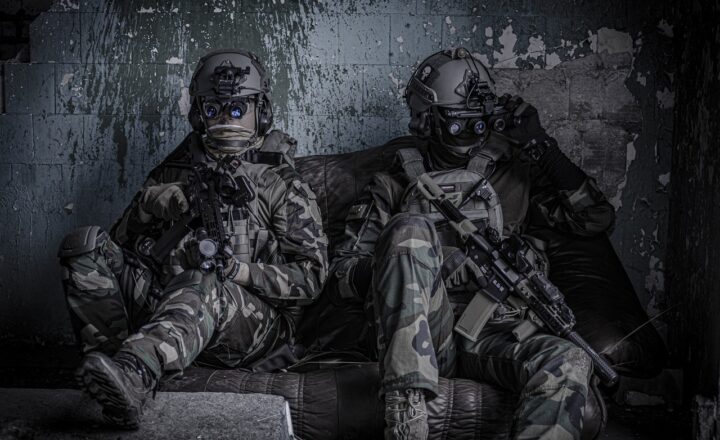
Ceasefire agreements have proven to be vital tools in international diplomacy and conflict resolution. They represent a formal agreement between two or more parties to stop armed conflict and can lead to negotiations for a more permanent peace. Through examining historical case studies and the mechanisms behind ceasefire agreements, we can understand their importance in preventing escalation and fostering a path towards reconciliation.
1. Defining Ceasefire Agreements
A ceasefire agreement is a crucial diplomatic tool used to pause hostilities in a conflict. It establishes ground rules for each party, providing clarity on when and how fighting will cease. Such agreements can take various forms:
- Temporary Ceasefires: Typically short-term and aimed at enabling humanitarian aid or negotiations.
- Permanent Ceasefires: Long-term agreements usually intended to lead to a lasting peace settlement.
- Bilateral vs. Multilateral Ceasefires: Agreements can involve two parties or a larger coalition of interested stakeholders to address complex conflicts with multiple factions.
Though ceasefire agreements differ in context, each serves as a vital step towards ending violence and establishing a framework for peace.
2. Historical Context
Throughout history, ceasefire agreements have played critical roles in various conflicts. The following cases illustrate their importance:
– **The Korean War (1950-1953):** The Korean Armistice Agreement, signed in 1953, halted hostilities between North and South Korea, establishing the Korean Demilitarized Zone (DMZ). While an official peace treaty was never signed, the ceasefire has reduced active conflict conditions for decades.
– **The Vietnam War (1973):** The Paris Peace Accords aimed to establish peace in Vietnam, ultimately leading to the withdrawal of American troops and a cessation of hostilities. While not entirely successful, the accords marked a significant reduction in violence.
– **The Israel-Palestine Conflict:** Various ceasefire agreements over the years, such as those mediated by Egypt and the United States, demonstrate how ceasefires can allow for dialogue and limit escalation during intense periods of conflict.
These examples highlight that ceasefires, even temporary ones, can provide critical breathing space necessary for diplomacy and negotiation to flourish.
3. Mechanisms of Successful Ceasefires
Not all ceasefire agreements are successful, so understanding what contributes to their effectiveness is crucial. Several mechanisms include:
– **Clear Communication:** Clearly defined terms, roles, and responsibilities are essential. Effective communication channels between conflicting parties can help prevent misunderstandings.
– **Monitoring and Verification:** International monitoring through organizations such as the United Nations can ensure compliance. These entities can investigate alleged ceasefire violations transparently.
– **Involvement of Epistemic Communities:** Engaging peacebuilding experts can enhance negotiation processes and propose models for long-term stability.
– **Integrated Peacebuilding Approaches:** Often, ceasefires should include humanitarian considerations, discussions around grievances, and frameworks for political solutions.
By implementing these mechanisms, parties can enhance the likelihood of lasting peace beyond the ceasefire itself.
4. Preventing Escalation through Ceasefire Agreements
The primary purpose of ceasefire agreements is to prevent escalation. Below are ways in which these agreements serve to mitigate violence:
– **Reducing Immediate Violence:** Ceasefire agreements create a pause in hostilities, reducing immediate loss of life and allowing for humanitarian aid to reach those affected.
– **Creating Opportunities for Dialogue:** Ceasefires enable parties to come to the negotiating table. They foster an environment conducive to discussions about underlying grievances.
– **Building Trust:** The successful implementation of ceasefires can build trust among parties, establishing a foundation for future negotiations. Trust is paramount in conflict resolution, preventing parties from reverting to violence.
– **Changing the Narrative:** Ceasefires can shift the focus from warfare to peacebuilding, allowing communities to engage in dialogues focused on reconciliation and cooperation.
These factors illustrate that ceasefire agreements are not merely pauses in warfare; they are vital components in the broader process of conflict resolution.
5. Challenges to Ceasefire Agreements
While ceasefire agreements are essential for peacebuilding, they are not without challenges:
– **Non-state Actors:** In conflicts with multiple factions, including non-state actors, gaining consensus can be complicated. These parties may not recognize the authority of formal agreements.
– **Spoilers:** Individuals or groups may actively work against ceasefires for political gain. Identifying and accommodating these spoilers is necessary for long-term peace.
– **Lack of Political Will:** Often, parties may sign ceasefire agreements without the intention of compliance. Genuine political commitment is crucial for the success of any ceasefire.
– **Difficulties in Monitoring and Enforcement:** Monitoring compliance can be resource-intensive, especially in complex and volatile environments. International community engagement can help but is not guaranteed.
By recognizing and addressing these challenges, stakeholders can enhance the effectiveness of ceasefire agreements and improve prospects for sustainable peace.
6. Conclusion
Ceasefire agreements are fundamental tools in preventing escalation and moving towards lasting peace. Through historical analysis and a detailed understanding of the mechanisms of effective ceasefires, it becomes evident that they offer remarkable opportunities for dialogue, trust-building, and ultimately, reconciliation.
However, challenges remain; addressing these requires commitment and collaboration from all parties involved, as well as support from the international community. For ceasefires to sustainably prevent escalation, they must be part of a holistic approach to conflict resolution that prioritizes dialogue, trust, and long-term stability. Only then can ceasefires transform potential violence into pathways for peace.







